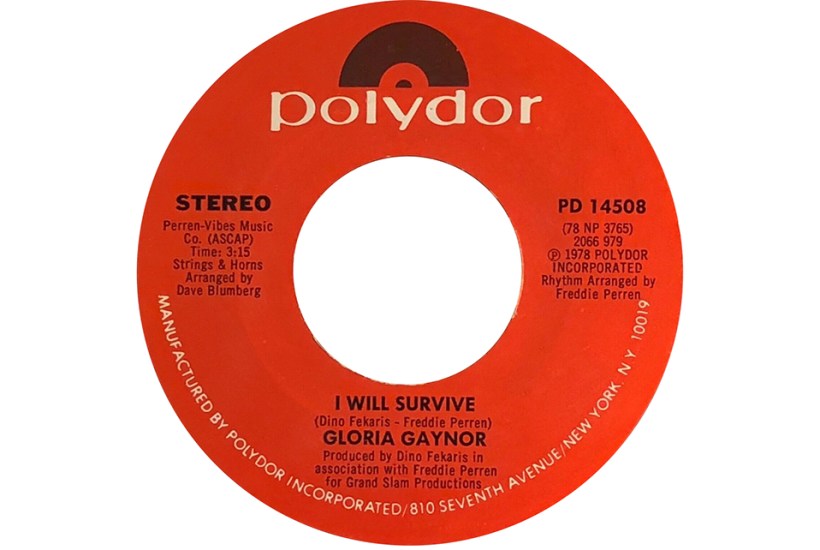Paul Weller releasing a collection of solo B-sides is cause for mild celebration. After all, the Jam were one of the great B-side bands. ‘Tales From The Riverbank’, ‘The Butterfly Collector’, ‘Liza Radley’ – all A-list songs, relegated to the subs’ bench.
Remember the B-side? That bijou, creative safe space which didn’t merely permit but positively encouraged artists to write parallel narratives of exploration, experimentation and extemporisation.
I still remember the first B-side I fell in fascination with. It was called ‘Christ Versus Warhol’, a queasily psychedelic, wilfully odd indulgence on the wrong side of the Teardrop Explodes’ determinedly poppy ‘Passionate Friend’. I felt like the protagonist in Gregory’s Girl. Which to love: the athletic blonde in the shorts or the arty brunette in the beret? No need to decide, of course. I could swoon over both.
For the artist, the B-side was the second date where you could casually drop a couple of French novels into the conversation. It was an invitation for the unveiling of a hinterland. ‘Moi? Not just a pretty face, darling.’ Extras and hidden ‘Easter eggs’ in a DVD; a new prologue; that hastily rewritten first act – none match the perfect charm and functionality of the B-side. A prime example of the medium creating the message, its existence was solely due to the physical requirements of the 45rpm single and the inarguable logic that a disc with two sides needed coverage on both. Like a coin. Heads you win; tails is anybody’s guess.
We should define terms. A classic B-side couldn’t be an album track shunted on to a single, or an instrumental remix. It had to be a new song, previously unreleased, ideally a little outré. For some bands it was a chance for the drummer to score a lead vocal. Others could showcase their own compositions, rather than those by their puppetmasters. While producers Nicky Chinn and Mike Chapman ruthlessly constructed the Sweet’s glam-pop A-sides, the band were airily permitted to handle the B-sides. The effect was like listening to two different groups; or, at least, like getting to know a deeper side of a good friend. The Monkees had a similar deal. For other bands, the B-side served notice of a coming shift in direction. (Listen to ‘It’s Getting Late in the Evening’, the flip of ‘Life’s What You Make It’ by Talk Talk, and hear an augury that they would shortly be weighing anchor to drift off to some unmapped foreign shore.)
Sometimes the B-side was so persuasive it won promotion. Rod Stewart’s ‘Maggie May’ began life as the poor relation to ‘Reason To Believe’ until disc jockeys spotted its hit potential and started playing it incessantly. The same thing happened with Gloria Gaynor’s ‘I Will Survive’. Hot Chocolate’s ‘You Sexy Thing’ was a B-side flop turned smash.
The B-side wasn’t rock or pop. It was artistically democratic. Everybody needed one. Like the B-movie, it was often regarded as second rate, disposable, often with good reason, yet one can take the measure of an artist via the quality of their off-cuts. The great practitioners include the Beatles (but not the Stones). The Clash, the Cure, New Order. Oasis, whose best songs – ‘Acquiesce’; ‘The Masterplan’ – were B-sides, while ‘Talk Tonight’ and ‘Half The World Away’ repositioned Noel Gallagher as a bar-stool balladeer. Buzzcocks. Siouxsie & the Banshees. Elvis Costello. Pet Shop Boys. Prince. The Smiths. Suede. The Jam.
Which brings us back to Weller. Will of The People is a ‘carefully curated’ collection of 31 tunes, many only ever previously issued as B-sides. Several are very good. While the raft of remixes and alternate takes is mostly of interest only to diehards, much here honours the primary role of the B-side in allowing us to eavesdrop on an artist gambolling freely. We get Weller as pastoral jazzer (‘Golden Leaves’) and Bowie fanboy (‘Landslide’); we get him funky on ‘Mother Ethiopia’ and folksy on ‘Oranges and Rosewater’. His take on the Beatles’ ‘Birthday’ reminds us that the B-side was always game for a rowdy cover version.
It’s hard not to talk about such things in the past tense. Since the single stopped being a predominantly physical artefact – though they’re still out there – the B-side (as distinct from the ‘bonus track’ as a tiger from a tomcat) has become an endangered species. In its pomp, it spoke to a freedom and mischief in music-making which is less apparent in the age of streaming, when every song is a potential single. All ten tracks from the Arctic Monkeys’ new album, The Car, entered the streaming chart in the week of its release. Not much fun, really. The B-side was fun.
The post The joy of B-sides appeared first on The Spectator.
Got something to add? Join the discussion and comment below.
Get 10 issues for just $10
Subscribe to The Spectator Australia today for the next 10 magazine issues, plus full online access, for just $10.
You might disagree with half of it, but you’ll enjoy reading all of it. Try your first month for free, then just $2 a week for the remainder of your first year.














Comments
Don't miss out
Join the conversation with other Spectator Australia readers. Subscribe to leave a comment.
SUBSCRIBEAlready a subscriber? Log in